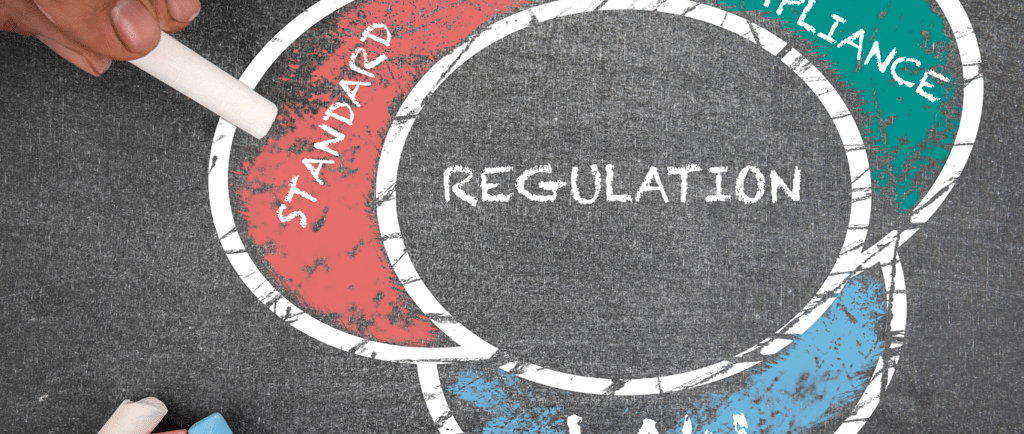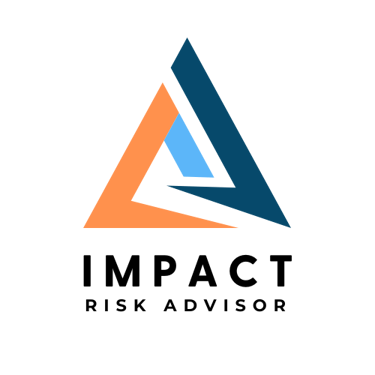Navigating Dual Compliance: Aligning SOC 2 and ISO 27001 Risk Assessments for Global Business Success
This article will explore the key steps to conducting a risk assessment that meets the requirements of both SOC 2 and ISO 27001, helping your organization achieve dual compliance and secure operations across multiple jurisdictions.
Louis Van Der Westhuizen - Founder and Principal and Impact Risk Advisor
6/7/20245 min read


In the U.S., SOC 2 is the standard for robust information security, while in Europe, ISO 27001 is the benchmark. To streamline compliance and ensure smooth operations, it's essential to align SOC 2 and ISO 27001 using a unified risk assessment approach.
By integrating these standards, your organization can conduct a single risk assessment that satisfies both SOC 2 and ISO 27001. This not only simplifies compliance but also strengthens your security posture, protecting your information assets against various risks.
This article will explore the key steps to conducting a risk assessment that meets the requirements of both SOC 2 and ISO 27001, helping your organization achieve dual compliance and secure operations across multiple jurisdictions.
A 10-Step Guide to Success
Conducting a risk assessment that complies with both SOC 2 and ISO 27001 involves a systematic approach that aligns with the requirements and principles of both standards. Here’s a step-by-step guide:
Step 1: Define the Scope
SOC 2: Focuses on five Trust Services Criteria (Security, Availability, Processing Integrity, Confidentiality, Privacy). Ensure the risk assessment addresses the Trust Services Criteria explicitly and that controls are designed to meet these criteria.
ISO 27001: Covers a broad range of information security controls and requires the establishment of an Information Security Management System (ISMS).
Ensure the scope includes all relevant systems, processes, data, and locations covered by both standards.
Step 2: Establish a Risk Management Framework
Create a Risk Management Policy: This policy should outline the risk assessment methodology, risk criteria and responsibilities.
Identify Risk Owners: Assign responsibility for managing risks to specific individuals or teams.
Step 3: Identify Assets and Processes
Inventory of Assets: List all information assets, including hardware, software, data and personnel.
Business Processes: Document all business processes that involve these assets.
Step 4: Identify Threats and Vulnerabilities
Threat Identification: Identify potential threats to the assets and processes, such as cyber-attacks, data breaches or natural disasters.
Vulnerability Identification: Identify vulnerabilities that could be exploited by these threats, such as software flaws, inadequate security configurations or lack of training.
Step 5: Assess Risks
Determine Likelihood: Estimate the likelihood of each threat exploiting a vulnerability.
Determine Impact: Assess the potential impact on the organization if the threat were to materialize.
Step 6: Evaluate and Prioritize Risks
Risk Evaluation: Use a risk matrix to evaluate and categorize risks based on their likelihood and impact.
Prioritize Risks: Focus on the most critical risks based on their severity
Step 7: Implement Controls
Control Identification: Identify existing controls and determine if additional controls are needed.
SOC 2 Controls: Align controls with the Trust Services Criteria.
ISO 27001 Controls: Align controls with the Annex A controls of ISO 27001, ensuring they cover areas like access control, cryptography, physical security and incident management.
Step 8: Document and Communicate
Risk Assessment Report: Document the findings, including identified risks, their evaluation and the controls in place.
Management Review: Present the risk assessment to senior management for review and approval.
Step 9: Monitor and Review
Continuous Monitoring: Regularly monitor the risk environment and the effectiveness of controls.
Periodic Reviews: Conduct periodic risk assessments to ensure ongoing compliance and address new risks.
Step 10: Incident Response and Improvement
Incident Response Plan: Develop and maintain an incident response plan specific to information security incidents.
Continuous Improvement: Use the findings from incidents and regular reviews to improve the risk management process and controls.
Unique Differences
You may be wondering what elements would be uniquely included in an ISO 27001 risk assessment and those uniquely found in a SOC 2 risk assessment.
ISO 27001 Unique Risk Assessment Elements
Context of the Organization:
Understanding the internal and external issues that can impact the ISMS.
Considering the needs and expectations of interested parties (e.g., stakeholders, regulators).
Annex A Controls:
Specific controls from Annex A of ISO 27001 that might not be directly referenced in SOC 2, such as:
A.11.1.4: Protecting against external and environmental threats.
A.13.2.3: Electronic messaging controls.
A.14.2.7: Outsourced software development controls.
ISMS Scope:
Defining the scope of the ISMS in terms of the organization's boundaries and applicability, ensuring all relevant assets, processes, and stakeholders are covered.
ISMS Objectives:
Setting measurable information security objectives in line with the organization's strategic goals.
Legal and Regulatory Requirements:
Detailed assessment of compliance with local and international laws specific to information security (beyond those typically considered in SOC 2).
SOC 2 Unique Risk Assessment elements
Trust Services Criteria Specific Controls:
Focused controls related to the five Trust Services Criteria: Security, Availability, Confidentiality, Processing Integrity, and Privacy.
Service Commitments and System Requirements:
Specific commitments made to customers and stakeholders regarding the service and system performance, including agreed service levels.
Fraud Risk
SOC 2 assessments should include a thorough evaluation of fraud risks and appropriate controls to address the risks.
Exposing Hidden Risks
There are several risks that might not be as obvious but are crucial for a comprehensive assessment.
Supply Chain and Third-Party Vendor Risks:
Security weaknesses in vendor systems, interruptions or breaches in the supply chain affecting operations.
Human Error and Insider Threats:
Accidental data breaches, improper data handling, misuse of access for malicious purposes.
Data Quality and Integrity Risks:
Risks arising from inaccurate or incomplete data being processed or stored, unauthorized modification of data.
Configuration Management Risks:
Incorrect configurations or gradual changes in configurations over time.
Physical Security Risks:
Inadequate security measures at physical locations such as data centers or offices, theft of hardware containing sensitive data.
Application Security Risks:
Vulnerabilities in custom or third-party software.
Legal and Compliance Risks:
Failing to keep up with changing legal and regulatory requirements resulting in non-compliance with data protection laws like GDPR or CCPA.
Privacy Risks:
Mishandling or unauthorized disclosure of personal information.
Incident Response Risks:
Inadequate or ineffective incident response processes including regular testing of incident procedures.
Disaster Recovery and Business Continuity Risks:
Unpreparedness for natural disasters or cyber incidents and ineffective recovery plans that are not tested or updated.
Cloud Security Risks:
Risks related to the use of cloud services, including data breaches and loss of control over data, incorrect configurations of cloud resources, misunderstanding of the division of security responsibilities between the cloud provider and the organization.
Legacy Systems and Unsupported Software:
Risks associated with using legacy systems that are no longer supported or patched.
Mobile Device and Remote Work Risks:
BYOD (Bring Your Own Device) security risks or insecure remote access practices.
Social Engineering Attacks:
Phishing where employees are tricked into disclosing sensitive information or pretexting where attackers create false scenarios to obtain information.
Emerging Technologies:
Security risks associated with IoT devices, misuse or vulnerabilities in AI systems.
Fraud Risks:
Fraud risk is frequently overlooked in risk assessments. In our next article, we explore fraud risk in detail and explain its relevance to SOC 2 and ISO 27001 compliance.
Combating Hidden Risks
To ensure a comprehensive risk assessment, consider the following steps:
Holistic Risk Identification: Look beyond traditional IT risks and consider all aspects of your operations, including third-party interactions, physical security and process changes.
Regular Reviews: Periodically review and update your risk assessment to account for new threats and changes in your environment.
Cross-Functional Input: Involve various departments in the risk assessment process to gain insights into different risk areas.
Continuous Monitoring: Implement continuous monitoring tools and auditing to detect and respond to risks and security incidents promptly.
Employee Training: Invest in training programs to educate employees about security risks and proper procedures.
Vendor Management: Implement robust vendor management processes to ensure third-party security.
Regular Testing: Conduct regular testing of disaster recovery and business continuity plans.
By addressing these hidden often-overlooked risks, organizations can enhance their information security posture and ensure a more comprehensive and effective implementation of the SOC 2 and ISO 27001 requirements.
The Bottom Line
By understanding and integrating the requirements of both SOC 2 and ISO 27001 standards, your organization can achieve a robust security posture that not only meets regulatory demands but also enhances overall operational resilience.
Remember, effective risk management is continuous and dynamic. Regularly update your risk assessments, engage with all stakeholders, and ensure that both technical and human elements are considered. By doing so, you can confidently navigate the complexities of dual compliance, protect your information assets and maintain the trust of your clients and partners.
Reach out to Impact Risk Advisors if you are interested in taking a proactive, detailed, and integrated approach to dual compliance.
